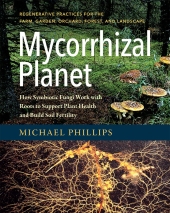posted 3 years ago
I love the idea of using needle/leaf litter with mycelia from you forest for compost. I'd echo everything Eli said, and maybe add a few *speculations*:
- Saprophytic fungi often go through several stages of succession, with one species living on fresh organic matter (primary decomposer), another taking over once that is partially decomposed (secondary decomposer), and others feeding on the leftover humus (tertiary decomposers). As the fungi already present in the litter do their work, they may be succeeded by other naturally occurring fungi. If you keep adding litter, the primary decomposer may take up permanent residence in your compost/beds.
- When you add leaf litter already colonized with fungi to your beds, you are encouraging a fungi-dominated microbiome. This is as opposed to a bacteria-dominated microbiome. Fungi prefer substrates containing lignin (like leaves) and acidic substrates (such as pine needles). Bacteria prefer substrates with high nutrient availability (like manure). By mixing the the litter, which is colonized with fungi, with manure, which is mostly bacteria, I'd guess you're making a good mix of a fungal/bacterial microbiome. This is also related to the idea of the carbon-to-nitrogen ratio of your compost. I'm not sure what's best for raised beds, but I think they tend to err on the side of bacteria. If you have any fruit/nut trees or bushes, Michael Phillips (late author of The Holistic Orchard and Mycorrhizal Planet) promotes creating fungi-dominated soils, which would benefit from adding the fungi-colonized litter.
- When you remove the litter from the forest, you preference the regeneration of pines over broadleaf trees. Pines generally colonize scarified earth, while broadleaf trees prefer a thick organic horizon (see Anna Tsing, The Mushroom at the End of the World). You may not be removing litter at this big of a scale, but think about what you want from the forest. In terms of fungi, both pines and oaks support mycorrhizal mushrooms, including matsutake.







